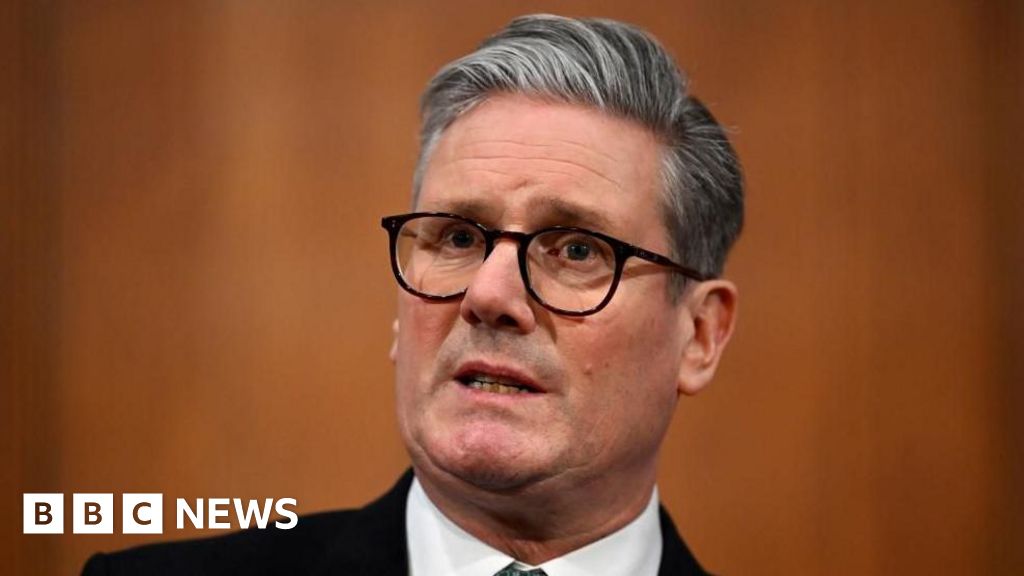
Washington
CNN
—
Inflation is on the rise once more, and President Donald Trump has recently stated that his predecessor is to blame. Regardless of Trump’s claims, the economic sentiment in America is declining, leading to increased scrutiny on his administration.
The University of Michigan recently published a survey revealing that US consumer sentiment fell for the second month in a row in February, plummeting 10% from January’s figures—a revision that doubled the decline initially reported.
This marks a significant shift after a brief period of optimism among consumers and businesses regarding the economy’s prospects following Trump’s election in November. The recent drop in consumer sentiment is largely attributed to fears that new tariffs imposed by Trump could lead to rising prices.
A new CNN poll conducted Thursday echoed this sentiment, highlighting a growing sense of pessimism among Americans regarding prices: approximately 62% of US adults believe Trump isn’t doing enough to tackle inflation. The Michigan survey suggests that many Americans are now anxious about potential inflation increases in the near future.
During his campaign, Trump vowed to “reduce prices starting on Day One,” a promise that remains unfulfilled. In January, consumer prices surged at the highest monthly rate since August 2023, increasing by 0.5% compared to December.
Joanne Hsu, the director of the Michigan survey, stated that the widespread decline in sentiment is “largely driven by concerns that price hikes from tariffs are imminent.”
However, shifts in sentiment appear to be diverging along party lines.
“While sentiment has declined among Democrats and Independents, it remains unchanged for Republicans, indicating ongoing disagreements over the effects of new economic policies,” she remarked.
Concerns About Inflation, Future Outlook, and the Federal Reserve
The Trump administration’s firm approach to tariffs is a significant factor influencing the negative perceptions regarding the economy, as suggested by various consumer surveys and polls.
To date, the government has enforced a 10% tariff on all Chinese goods and imposed a 25% tariff on steel and aluminum imports, with no exemptions. The administration is also exploring the implementation of “reciprocal tariffs” on trading partners, anticipated to take place in early April. Additionally, Trump is considering maintaining 25% tariffs on Mexico and Canada, likely escalating inflation concerns, according to economists.
“The economy is facing increased uncertainty,” remarked Atlanta Fed President Raphael Bostic in an essay published Thursday. “A trade policy uncertainty index from Federal Reserve economists has dramatically exceeded its historic highs.”
The ongoing discussions surrounding tariffs have influenced American attitudes towards prices: Expectations for inflation in the upcoming year rose to 4.3% this month, as per the Michigan survey, marking an increase of one full percentage point since January, the highest level recorded since November 2023. During a recent press call, Bostic stated, “We are monitoring all” measures of inflation expectations closely.
The Federal Reserve, which oversees interest rate management, pays close attention to consumer perceptions regarding pricing, as such perceptions can sometimes create a self-fulfilling prophecy. If shoppers anticipate inflation rising, they may alter their spending behavior.
However, the Federal Reserve does not yet face a significant crisis. They concentrate on long-term inflation expectations, which rose less dramatically this month compared to short-term expectations, increasing to 3.5% in February from 3.2% in January. Nevertheless, it surpassed the initially reported figure.
“In today’s discussions, increasing tariffs and immigration policies are frequently seen as likely to drive prices higher, diminish overall demand, and potentially weaken employment. From a monetary policy perspective, it might be suitable to overlook or dismiss a rise in price levels if the inflationary impact is predicted to be temporary and restricted,” stated St. Louis Fed President Alberto Musalem at a New York event. “However, a different approach to monetary policy could become necessary if inflation persists or if long-term inflation expectations rise significantly.”
The closely watched Consumer Price Index recorded a 3% increase in January compared to the previous year, as reported by the Labor Department last week, marking the fastest annual rate since summer 2024.
In an interview with Fox News’ Sean Hannity aired Tuesday, Trump declared, “inflation is back,” attributing the recent rise to government expenditures during the Biden administration. It’s important to note, however, that Trump bears minimal responsibility, as he was in office for less than half the duration referenced in the latest inflation report.
The latest surge in inflation undeniably occurred under former President Joe Biden’s tenure.
“I had nothing to do with it,” Trump insisted. “These people have been in charge of the country. They spent money like no one has ever spent.”
Yet, currently, inflation is now a challenge for Trump.
Economists have noted that government spending has significantly contributed to the economic recovery post-pandemic—through trillions of dollars allocated for COVID-related relief and infrastructure initiatives—but this alone does not explain the inflation surge. The true cause is a combination of various factors, including pandemic-induced disruptions to supply and demand and geopolitical tensions such as the Russia-Ukraine conflict.
“The combination of pent-up demand, stimulating policies, shifts in work and leisure habits due to the pandemic, and additional savings from reduced spending on services all contributed to an unprecedented spike in consumer expenditure on goods. Furthermore, the pandemic severely disrupted supply conditions,” Fed Chair Jerome Powell explained in his keynote speech at the Kansas City Fed’s annual economic symposium last year.
“Thus, inflation emerged,” he concluded.









